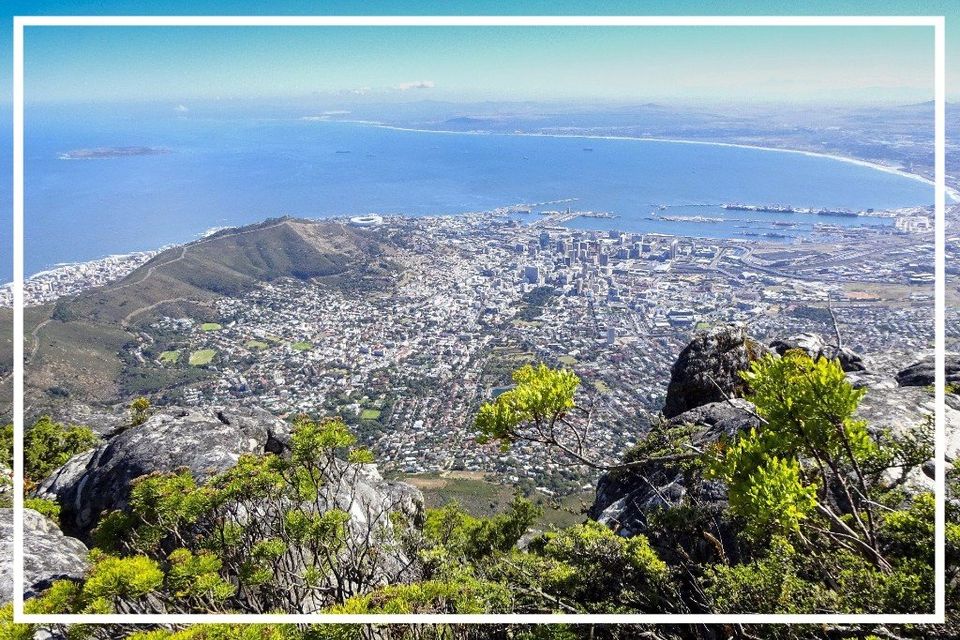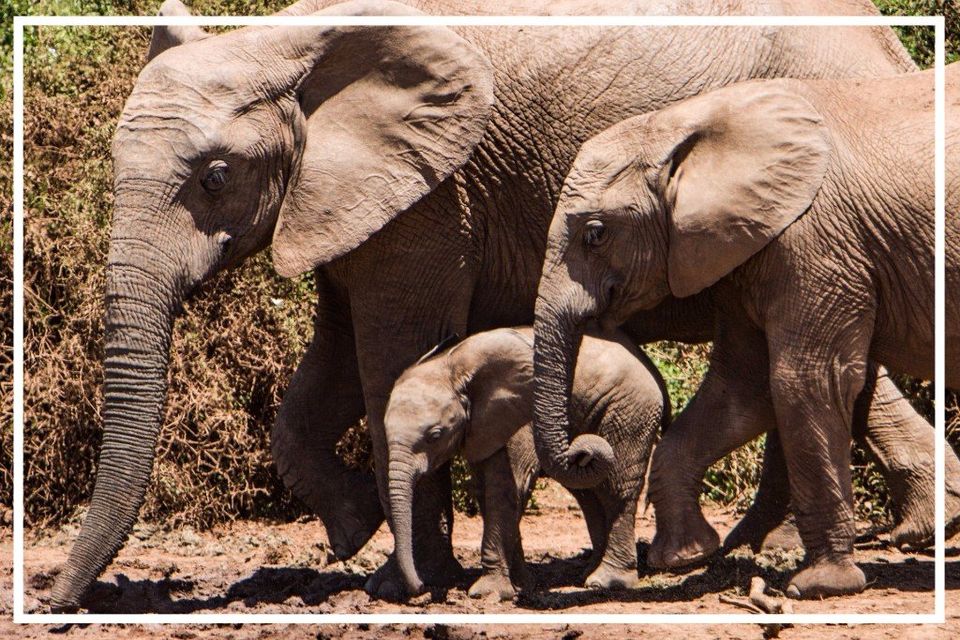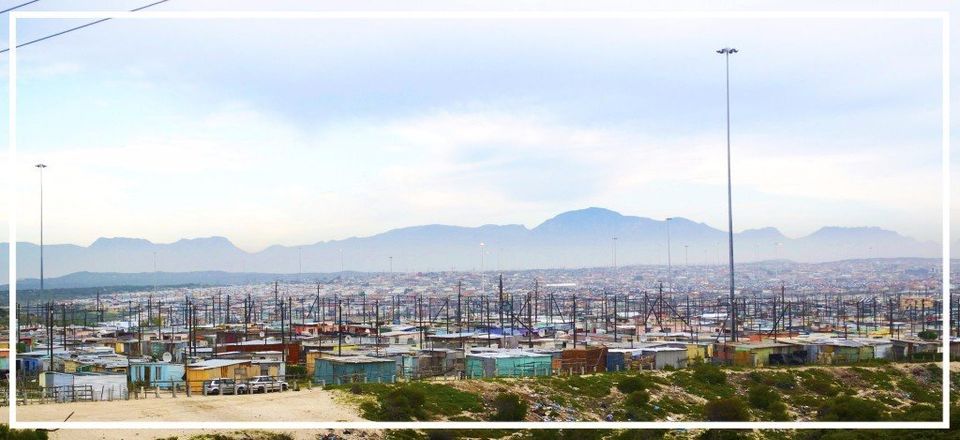THE GARDEN ROUTE – FROM CAPE TOWN TO PORT ELIZABETH
By Fenja
The Garden Route is one of the most popular tourist destinations in South Africa, which is partly due to its incredible versatility. The popular round trip along the Garden Route runs from the coastal town Mossel Bay on the N2, along the Indian Ocean up to the Tsitsikamma National Park - and in some definitions, it even extends to Port Elizabeth and the nearby Addo Elephant National Park. However, who imagines the Garden Route like its sonorous name and expects flower-filled gardens, is on the wrong way. The Garden Route owes its name to the fertile countryside that surrounds it. Compared to the desert in the north of the Route, the Little Karoo, this landscape part is characterized by lush vegetation. The name goes back to the colonial era, in which the first explorers, researchers and settlers compared the land with the Garden of Eden, because of its plant wealth and green colours.
The Garden Route represents a beautiful and varied nature. It is hardly surprising that this diversity is protected in a National Park, which consists of several parks. The diverse coastline along the Indian Ocean presents itself with long sandy beaches, beautiful lagoons, but also rugged cliffs. Heading inland you will find deep forests, such as the Knysna Forest, inviting you to hike and to mountain bike. Behind the up to 1,500 metre high mountain range of the Swartberge separates the fertile coast from the dry semi-deserts. Many activities, such as whale watching in the African winter months, year-round game viewing in the Addo Elephant Park, a visit to the picturesque seaside town Knysna or Oudtshoorn, with its countless ostrich farms, are creating unforgettable experiences along the Garden Route
I have seen South Africa from its best side – the Garden Route!

DAY 1: WELCOME TO SOUTH AFRICA – EXPERIENCE CAPE TOWN
Already out of my planes window I could discover the Table Mountain, the landmark of Cape Town. The feeling at the sight of this giant: Indescribable!
I was one of 32 tour participants; my fellow travellers and I were given a warm welcome at arrival by our guide. We started with a small city tour through Cape Town and saw the first Townships and the Castle of Good Hope, the oldest surviving building of the colonial era in South Africa. We drove through several neighbourhoods of Cape Town, but most impressive above all was the quarter Bo-Kap with its colourful houses at the foot of Signal Hill. Narrow streets, some very steep uphill and still covered with cobblestones, in between mosques - the Bo-Kaap district exudes the charm of past centuries from the time the freed slaves brought their culture and customs as they settled down here.
Right after the city tour the first highlights of the trip followed: The weather was sunny, windless and fog-free – there was nothing standing in the way of getting up the Table Mountain! Ever since the first sailors had sailed around the Cape of Good Hope, the 1086-metre high Table Mountain was a landmark, as it was visible for more than 100 kilometres. The ascent in the car of the cableway took about seven minutes while offering a 360° rotating view. Once arrived on the platform of the Table Mountain, we had comfortable 20 degrees. The first minutes we just stood and looked at the breath-taking panorama. Towards the city side, we saw the distinctive rock of Lions Head or Signal Hill and even the Table Bay with Cape Town’s sea houses and the deep blue Atlantic Ocean lay at our feet.
DAY 2: THE PLEASURE OF FRESH OYSTERS – A CRUISE ON THE KNYSNA LAGOON
Early in the morning, we left the Mother City and followed the Garden Route via Sedgefield and George to Knysna. I enjoyed the views of the turquoise Indian Ocean and the lush green forests, which we passed through. As we arrived in the lagoon city Knysna, we did a relaxing boat trip into the African sunset and enjoyed the views of the distant mountains. Followed by the boat ride and an evening stroll along the waterfront, we enjoyed an amazing meal at the ‘Quay4’ restaurant - they had fresh oysters and clams, delicious! The Knysna Lagoon has the largest oyster farming area in South Africa; nowhere in the country can comparable oysters be found!

DAY 3: THE BIG FIVE WITHIN ONE’S REACH – GAME DRIVE IN THE ADDO ELEPHANT PARK
From Knysna our journey led via Plettenberg Bay to the Tsitsikamma National Park, a small, densely wooded terrain on the rugged coast. With a short hike through the evergreen forest we followed the road up to a 800 year old yellowwood tree, the so called Big Tree. Its height is 37 m, the trunk alone is 18 m high, has a circumference of about 9 m and a volume of over 50 m³. It is fascinating to think about how many generations of people already "experienced" this tree. Afterwards we kept driving to Port Elizabeth and Addo Elephant Park. In this National Park, we had a chance to see the rare Cape Elephants in their natural habitat and to discover zebras, antelopes and lions. We were excited right from the beginning – the first of the Big Five within one’s reach! The Addo Elephant Park is the only one in South Africa, where not only the Big 5, but also the Big 7 find their habitat. In South Africa, the term ‘Big Five’ is understood to mean lions, leopards, buffalo, elephants and rhinos, besides whales and great white sharks. The name "Big Five" dates back to the time of the big game hunters - here the big five were not rated according to their body size, but according to the difficulty and danger of the game.
DAY 4: THE CANGO CAVES
On this day, we left the coastal landscape and followed the road from Wilderness into the inward of the country across the Outeniqua Pass to Oudtshoorn. We crossed the Little Karoo, a semi-desert with many impressive mountain roads. Here it is hot, dry and nothing reminds of the fertile coastal region anymore. The area is especially known for its countless ostrich farms, the Cango Caves and the Swartberg Pass. The visit of the Cango Caves will stay in my mind for a long time. The huge caves are among the most beautiful caves systems in the world and very impressive.
DAY 5: WINE TASTING WITH SCENIC VIEWS - VISIT OF THE WINE LANDS IN STELLENBOSCH
We followed the R62 into the wine lands, South Africa’s major wine region. The Wine Lands are located in the triangle of Stellenbosch – Franschhoek – Paarl. For over 340 years wine is being produced here, which can compete easily with its European competitors. After the arrival in Stellenbosch, the second oldest town in South Africa, we took part in an informative city tour around the city. The town is situated in a fertile valley and known for its excellent location in the centre of South Africa's best wine-growing regions and for the prestigious Stellenbosch University. Furthermore, numerous well-preserved colonial buildings are to be found. During our stay in this idyllic town, we got an outstanding impression of the Cape Dutch and Victorian architecture. Following an exquisite wine tasting at one of the wineries, we drove back to Cape Town. Here we took an evening stroll around the V&A Waterfront, the old port and wharf area of Cape Town, which nowadays is an entertainment district with several bars and restaurants.
DAY 6: AT THE MOST SOUTHWESTERN POINT OF SOUTH AFRICA – CAPE OF GOOD HOPE
Rested and well strengthened by the rich buffet breakfast we started our fantastic panoramic tour to the south of the Cape Peninsula. The route took us directly through the coastal towns Camps Bay and Clifton to the port of Hout Bay. From here we drove to one of the most famous and most beautiful coastal roads in South Africa - the so-called ‘Chapman's Peak Drive’. It winds in 114 curves between the sea and steep cliffs of Hout Bay all the way to Noordhoek and provides a beautiful scenery and breath-taking views. After this panoramic trip and encounters with baboons and tortoises, we arrived at the Cape tip (Cape Point) around midday. For the last few meters, you can take the cableway up to the lighthouse or one decides to ascent the few steps by foot - it is highly recommended, because of the stunning views that will surprise you! More than 120 rock-hewn stairs lead you up to the old lighthouse on the Cape Point Peak, 250 meters above sea level. From here, you can even see the Cape of Good Hope! Afterwards we took a short trip to the Cape of Good Hope, where you - as it almost all tourists do – line up for a photo at the southwestern tip of Africa. Because a souvenir picture at the wooden billboard is an absolute Must-do! From here, we continued our drive towards Simons Town. Among other things, it is well known for the world-famous beach "Boulders Beach" with its unique penguin colony. Around the world, there are only two mainland colonies of penguins and especially the South African penguins are threatened by extinction. It was really impressive being so close to the penguins! Since we had enough time, we stopped in another small town. In the centre of Fish Hoek we strolled through the many small shops, drank coffee and enjoyed a walk on the beach.

DAY 7: TWO WORLDS - VISIT OF THE TOWNSHIP KHAYELITSHA
On the last day, we entered a different world in which the attractive centre of Cape Town seemed to be just a vague assumption: Khayelitsha, the second largest township in South Africa. Litter covered almost all the paths, cars drove with sawn-off exhaust pipes and one shack followed the next. Many people live in the very small spaces with little personal property. Many Africans, who live here, came from the Eastern Cape, in the hope of a better life in Cape Town. But it is also difficult to find work in the mother city and the government cannot keep their promise to give a brick house and basic supplies to all South Africans. The inhabitants, mostly whole families, are living in the so-called informal settlements, without toilets and sewer connection - the communal toilets are in poor condition and extremely unhygienic. Only half of the population has electricity. During the tour through the township, we learned many interesting facts from a young man who grew up in this township. This visit was incredibly moving for all of us and we will not forget it anytime soon!
Afterwards the whole group went to the airport from where we started our journey back to Germany. On Bord: Authentic impressions and many unforgettable memories.
Once someone told me, "South Africa is a very special country. Either you love it or you hate it." I can say - South Africa fascinated me. The diverse mix of culture, incredible and somehow still perceptible history, the surprisingly delicious food, the scenery, the wildlife and the fact that after that there is only the South Pole to come… - I am sure that it will not remain at just one trip: South Africa, I look forward to my next visit!
























































































































































































































